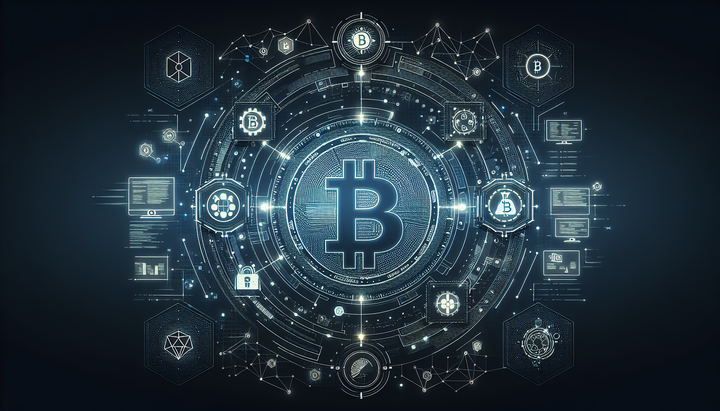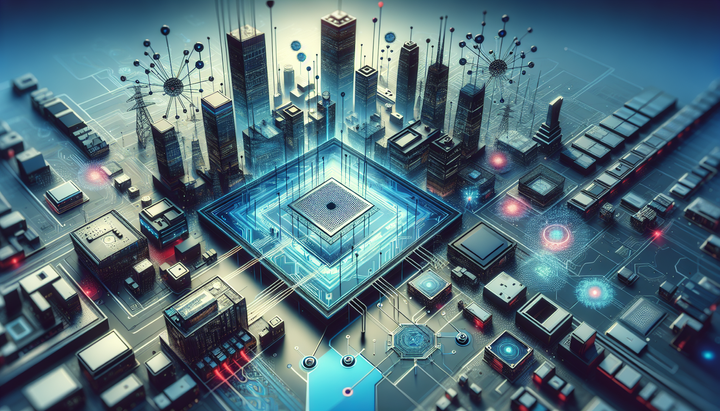Will AI-driven Cybersecurity Fortify 5G Edge Networks?

Introduction to AI-driven Cybersecurity in 5G Networks
In today's rapidly evolving technological landscape, securing digital infrastructures has become paramount. With the explosive growth of 5G edge networks, the convergence of AI-driven cybersecurity systems is not just desirable—it is essential. This article delves into the innovative world of cybersecurity fortified by artificial intelligence, examining its potential to safeguard tomorrow's high-speed networks against increasingly sophisticated threats.
The Emergence of AI-Driven Cybersecurity
AI-driven cybersecurity represents a paradigm shift in how digital threats are detected and neutralized. Traditionally, cybersecurity relied on static defenses and pre-determined rules to combat attacks. However, modern threats are dynamic and multi-faceted, requiring advanced solutions that learn and adapt in real time. Here’s why AI is at the forefront of this defense mechanism:
- Real-Time Threat Analysis: AI algorithms can process vast amounts of data in real time, identifying unusual patterns that may indicate a cyberattack.
- Adaptive Learning: Machine learning models learn from every encounter, continuously improving their detection and response strategies.
- Automation of Defense: By automating many cybersecurity tasks, AI-driven systems reduce response times and mitigate the impact of potential breaches more efficiently than traditional methods.
Integrating AI with 5G Edge Networks
5G networks are celebrated for their high-speed data transfer, low latency, and scalability. When integrated with AI-driven cybersecurity, these networks can not only support vast numbers of IoT devices and applications but also monitor and protect them in real time. Some key benefits of this integration include:
- Enhanced Data Protection: With billions of connected devices, 5G networks provide an expansive attack surface. AI helps in proactive threat detection, ensuring that vulnerabilities are identified and addressed promptly.
- Decentralized Security Measures: Instead of relying solely on centralized servers, AI-powered solutions can be deployed at the network edge, reducing lag and ensuring localized defense mechanisms.
- Scalability and Flexibility: As the number of connected devices increases, AI systems can scale accordingly, providing consistent security across vast and diverse networks.
Innovative Technologies Empowering AI-Driven Cyber Defense
The realm of cybersecurity is witnessing rapid advancements in several niche areas that are closely related to the integration of AI and 5G. Let’s explore some of these emerging technologies:
- Post-Quantum Cryptography: With quantum computing on the horizon, advanced cryptographic methods are being developed to withstand quantum attacks, ensuring that data remains secure even in the face of unprecedented computational power.
- AI-Generated Programming: This involves using AI to write code and generate security protocols, reducing human error and accelerating the development of robust cybersecurity systems.
- Silicon Photonics: By harnessing light for data processing, silicon photonics offers high-speed data transfer and energy-efficient computation, which is critical for powering next-generation AI algorithms.
- Edge AI Processing: Deploying AI algorithms directly at the network edge minimizes data travel time, lowers latency, and ensures rapid threat detection and response.
- Blockchain-based IoT Security: Blockchain provides an immutable ledger for device interactions, ensuring a transparent and secure method to verify the integrity and authenticity of IoT devices operating over 5G networks.
Challenges and Considerations in Implementing AI-Driven Cybersecurity
While the integration of AI with 5G offers numerous benefits, it is not without its challenges. Organizations must navigate several obstacles to fully realize the potential of these advanced technologies:
Data Privacy Concerns
To power AI algorithms, massive amounts of data are required. This raises significant privacy issues, particularly when sensitive information is involved. Ensuring that data collection and processing comply with regulatory standards such as GDPR and CCPA is critical.
Algorithmic Bias
AI systems learn from historical data, which may contain inherent biases. If unchecked, these biases can lead to false positives or negatives in threat detection. Continuous monitoring and updating of these models are essential to maintain fairness and effectiveness.
Complexity of Integration
The merging of legacy infrastructures with modern 5G and AI technologies can be complex. Organizations must invest in new hardware and software, while also retraining personnel to manage and operate cutting-edge systems effectively.
Case Studies: AI and 5G in Action
Several pioneering firms and research institutions are already harnessing the power of AI-driven cybersecurity within 5G networks. Below are some examples illustrating how these technologies are being applied:
Case Study 1: Telecommunications Giant's Transformation
A leading global telecommunications provider recently integrated AI-driven threat detection systems into its 5G network infrastructure. The results were remarkable:
- Reduction in breach incidents by over 40% within the first six months.
- Enhanced real-time monitoring allowed for immediate isolation of compromised network segments.
- Implementation of edge AI processing significantly decreased latency issues, creating a more resilient network architecture.
Case Study 2: Smart City Initiatives
Smart city projects, which rely heavily on IoT devices connected via 5G, have also benefited from AI-integrated cybersecurity. In one major metropolitan area:
- Deployment of blockchain-based security protocols ensured secure data exchanges between thousands of sensors and control systems.
- Integration of AI-driven analytics provided rapid responses to potential threats, mitigating the risk of widespread disruption.
- Collaboration with cybersecurity experts helped refine the algorithms and improve overall system reliability.
Expert Opinions on the Future of AI-Driven Cybersecurity
Industry experts from high-authority organizations such as MIT Tech Review and IEEE predict that the fusion of AI with 5G edge networks will become a cornerstone of digital defense. Here are a few insights from leading voices in the industry:
- Dr. Amelia Roberts, Cybersecurity Analyst: 'The future of cybersecurity relies on adaptive systems that can preemptively counter threats. AI-driven methods offer the agility required in today’s fast-paced digital environment.'
- Raj Patel, Research Scientist at a leading tech institute: 'By integrating AI with 5G, we are not only bolstering network security but also paving the way for innovations in IoT and smart city applications.'
- Elena Martinez, CTO of a Cyber Defense Firm: 'Investing in AI-driven cybersecurity is an urgent necessity. The predictive capabilities of these systems can mean the difference between a minor breach and a catastrophic cyberattack.'
Implementation Strategies for Organizations
For businesses aiming to enhance their cybersecurity posture using AI and 5G, several strategic steps are recommended:
1. Assessing the Current Cybersecurity Framework
Before integrating new technologies, organizations should conduct a thorough review of their existing cybersecurity measures. This includes:
- Identifying vulnerabilities in the current system
- Evaluating the scalability of existing defenses
- Analyzing previous cyber incidents for potential improvements
2. Investing in Infrastructure Upgrades
Transitioning to a modern cybersecurity framework requires significant investment in both hardware and software. Consider the following:
- Edge Computing Devices: These devices help in processing and analyzing data locally, reducing the reliance on centralized systems.
- Advanced Sensors and Monitoring Tools: Continuous monitoring tools powered by AI can spot anomalies rapidly.
- Cloud Integration Solutions: Hybrid cloud environments facilitate flexible deployment of these technologies.
3. Collaborating with Cybersecurity Experts
Partnerships with industry experts and cybersecurity firms can provide invaluable insights into best practices and advanced protection strategies. Regular workshops, training sessions, and hiring specialized personnel can bridge the gap between traditional systems and next-generation cybersecurity solutions.
Future Trends and Innovations
Looking forward, several emerging trends are expected to shape the future of AI-driven cybersecurity in 5G networks:
- Integration of Quantum-Resistant Algorithms: As quantum computing matures, the development of quantum-resistant encryption methods will become crucial.
- Enhanced AI-Generated Programming: With improvements in AI coding capabilities, future systems will be able to autonomously generate and update security protocols.
- Expansion of Blockchain Security: Blockchain offers a decentralized method of securing IoT devices, an approach likely to see widespread adoption in smart infrastructures.
- Growth of Silicon Photonics: This technology promises to further enhance the speed and efficiency of data processing, ensuring that AI algorithms run more effectively on edge devices.
Conclusion
The fusion of AI-driven cybersecurity with 5G edge networks represents one of the most innovative and necessary advancements in digital defense today. As new threats continue to emerge alongside the rapid expansion of connected devices, the integration of advanced AI techniques is vital in safeguarding our digital future. Organizations that invest in these technologies not only enhance their security posture but also position themselves at the forefront of a technological revolution that promises to redefine how we interact with and protect our interconnected world.
By leveraging cutting-edge technologies like post-quantum cryptography, AI-generated programming, silicon photonics, edge AI processing, and blockchain-based IoT security, we are witnessing the dawn of a new era in cybersecurity. As research from institutions like IEEE and MIT Tech Review increasingly supports these innovations, the industry is moving towards a proactive, resilient, and intelligent approach to threat mitigation. For businesses, governments, and consumers alike, the coming years will demonstrate that embracing these changes is not merely an option—it is a necessity.
Ultimately, as we continue to navigate an era defined by both opportunities and challenges, the collaborative synergy between AI and 5G networks offers a promising pathway to sustained digital security and innovation. Stay informed, invest wisely, and be prepared to adapt, because the future of cybersecurity is not just about keeping pace with threats—it’s about staying one step ahead.



Comments ()